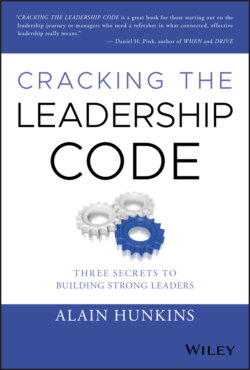Читать книгу Cracking the Leadership Code - Alain Hunkins - Страница 23
A BRIEF HISTORY OF LEADERSHIP IN ORGANIZATIONS
ОглавлениеNew parents often experience a moment that shocks and amazes them: the first time they catch themselves doing or saying the exact thing that their own parents did or said to them. Without even trying, they've internalized the behaviors of the previous generation.
Most people who go to work as managers and leaders in organizations don't study the history of organizational management and leadership. They're too busy doing their day jobs. They're not aware that their leadership philosophy (with all its assumptions and beliefs) is based on a worldview that has long outlived its shelf life.
Before the dawn of the industrial revolution, commerce was manufactured in people's homes and on small-scale farms. Work was done using basic hand tools and machines. For example, textiles were made on hand looms and then sold at local markets. The homemade nature of this work meant that production was limited.
However, all that changed with the arrival of industrial-era machines and tools. In the textile industry, the spinning Jenny (a form of power loom) changed the game. Before its invention, a worker could only work one spool of yarn at a time. The first spinning Jenny could work eight spools. As the technology improved, the number of spools on the power loom grew to 120.
With the advent of these new machines, a seismic shift occurred. The center of work moved from homes to factories. Mass production bloomed, and factory workers were in high demand.
For the first time in the history of human commerce, the birth of the factory era created a new necessity: the need for a large-scale labor force. Factory owners had sunk considerable investment into factories and equipment. They were keen to harness the newfound power of steam and electricity. To make their resources profitable, they recognized that they'd also need to find ways to harness the power of the human resource.
With this insight came a series of new questions. How would these employees be hired? Trained? Organized? Led? Which ways of leading were better than others? The attempts to answer these questions led to the discipline now known as management.
Organizational management was started by mechanical engineers: people who were trained to see the world as engineering problems to solve. The aim of scientific management (as it came to be called) was to improve efficiency, especially labor productivity. The goal of leadership was to get labor to do more work in less time.
For the manager, people were not the competitive advantage: the factory was. Having the latest and greatest machine was of primary importance. Employees were subordinate cogs in this mechanical worldview.
The man considered to be the father of scientific management was an engineer named Frederick Winslow Taylor. Taylor had a deep-seated belief: he thought employees were only out to take advantage of their employers and therefore must be controlled. Taylor was certain that most of the employees on the shop floor spent a lot of their time on the job goofing off and working slower than they could.
Left to their own devices, Taylor believed, workers would work at the slowest rate possible, a behavior commonly known as soldiering. From Taylor's perspective, soldiering wasn't just bad business; it was morally reprehensible. He wrote of soldiering as “the greatest evil with which the working-people…are now afflicted.”4
Therefore, employees were not to be trusted. Taylor felt employees spent every possible moment conniving new schemes to take advantage of their employer:
Hardly a competent workman can be found who does not devote a considerable amount of time to studying just how slowly he can work and still convince his employer that he is going at a good pace.5
For Taylor, the perfect worker was the one who questioned nothing, understood everything, and did anything he was told to do. Taylor wrote that the ideal worker should be “so stupid…that he more nearly resemble[d] in his mental make-up the ox than any other type.”6
With the publication of Principles of Scientific Management in 1911, Taylor's ideas spread like wildfire. His ideas became the dominant mode of business thinking for the first half of the 20th century.
Taylor's beliefs set the norms of how a workplace should work. In a very short time, the prototypical relationship between leader and employee was born. It was a relationship forged in the cauldron of power, fear, and control.
